Homemade Parker House rolls are classic yeasted dinner rolls made from folded-over dough that bakes up into the fluffiest, serve-them-with-anything rolls. These are buttery, light, and perfect as a holiday side.
I have partnered with Fleischmann’s Yeast to bring you my favorite Parker House rolls recipe! Thank you for continually supporting the brands that make this website possible.
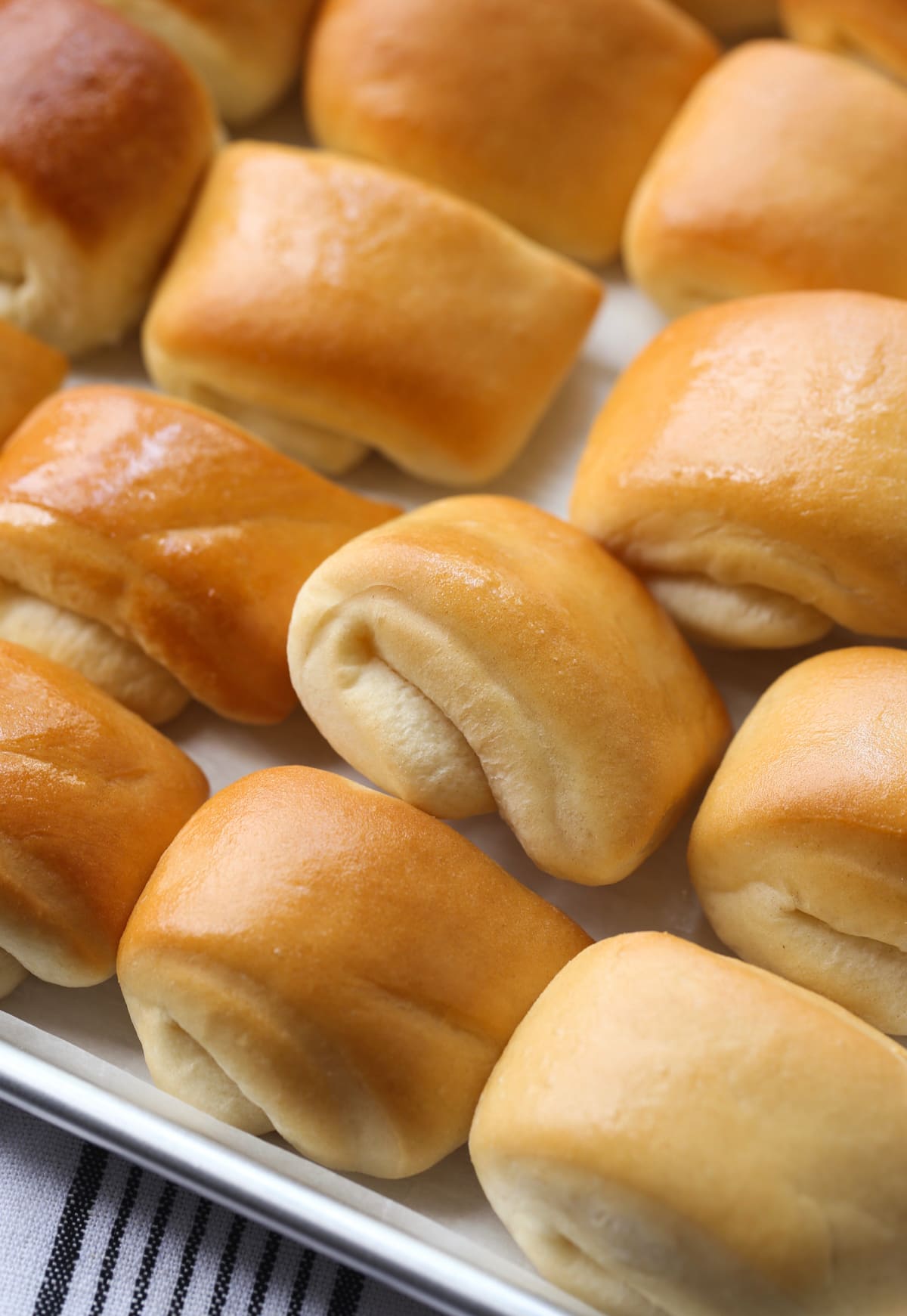
Why You’ll Love This Parker House Rolls Recipe
Ready to feel like a true baker? These soft and fluffy Parker House rolls are quick to make and guaranteed to bring satisfaction and smiles all around. Here’s why you’ll love this recipe:
- Perfect, fluffy rolls. These Parker House rolls are golden and buttery on the outside and soft and sweet on the inside. With Thanksgiving around the corner, they’re the perfect side to mop up all that gravy.
- Quick. Baking with yeast can seem intimidating, but this recipe keeps the process quick and easy. Using instant yeast cuts the rising time in half, so you can have your Parker House rolls on the table in just over an hour.
- Holiday-worthy. Dinner rolls are a must-have on a holiday table (IMO), especially when they’re home-baked with love. These rolls are just as great any time of the year. Pair your fluffy dinner rolls with just about anything!
What Are Parker House Rolls?
Parker House rolls are a classic sweet dinner roll, recognized by their signature folded-over shape. As the story goes, Parker House was the name of a 19th-century Boston hostel where these sweet dinner rolls originated.
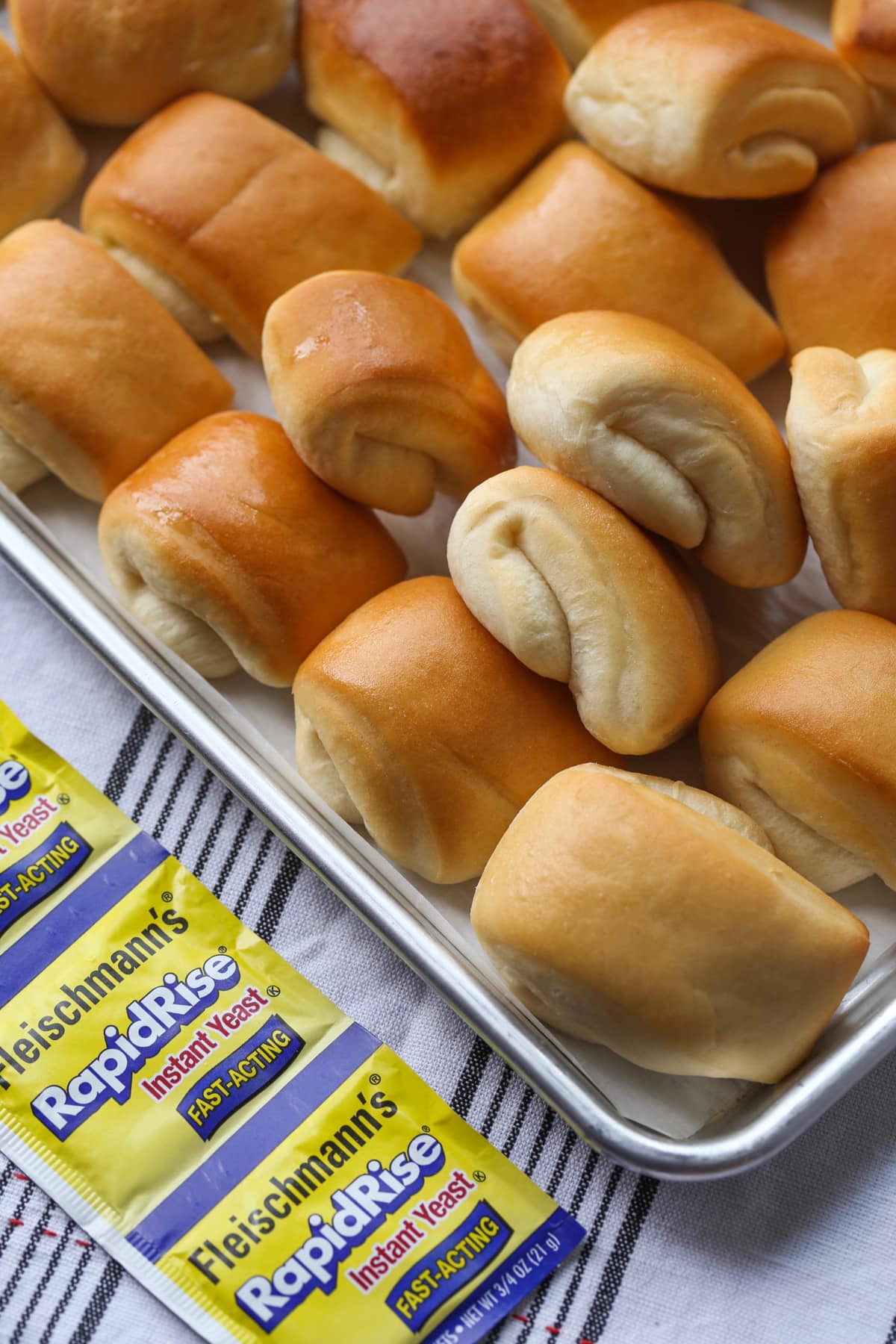
Ingredient Notes
The magic of bread baking is that it calls for so few ingredients. I’ve included some notes on what you’ll need to make Parker House rolls from scratch. Be sure to scroll to the recipe card below the post for the full measurements and recipe details.
- Flour and Sugar – All-purpose flour and regular granulated sugar.
- Yeast – I use Fleischmann’s® RapidRise® Yeast, as it produces consistent results and takes a lot of the guesswork out of baking with yeast. You can also make this recipe with your preferred brand of instant yeast.
- Salt
- Milk – You can use whole milk or 2% milk, whichever you have on hand.
- Butter – This can be salted or unsalted.
- Egg
How to Make Parker House Rolls
You’ll find lots of dinner roll variations out there, but I love this recipe the best. These Parker House rolls are quick to prepare with delicious, consistent results. Here’s how to make them:
- Mix the dry ingredients. You’ll start by combining some of the flour with sugar, yeast, and salt. With rapid-rise yeast, you don’t need to activate it beforehand. It can go straight in with the other ingredients.
- Warm the wet ingredients. Next, add milk, water, and butter to a bowl and heat it in the microwave until it’s warm to the touch. The butter doesn’t have to be completely melted.
- Combine. Beat the warm milk mixture into the dry ingredients, followed by the egg and additional flour to form the dough. The dough should be soft and a little sticky.
- Knead. Give the dough a good knead (8-10 minutes) to get it smooth and elastic. Then, cover the dough with a dish towel and let it rest.

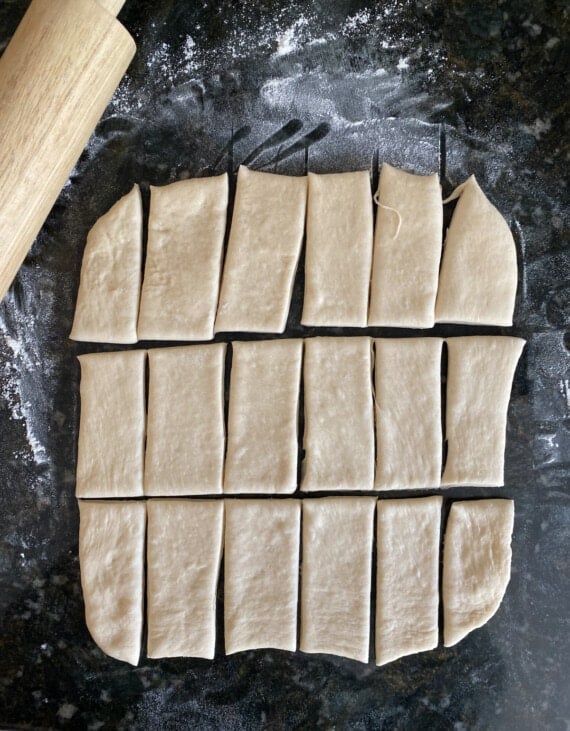
- Divide the dough. After 10 minutes, divide the dough in half. Roll each half into a thin square. Cut the square into 6 strips, and then cut each strip into three small rectangles.
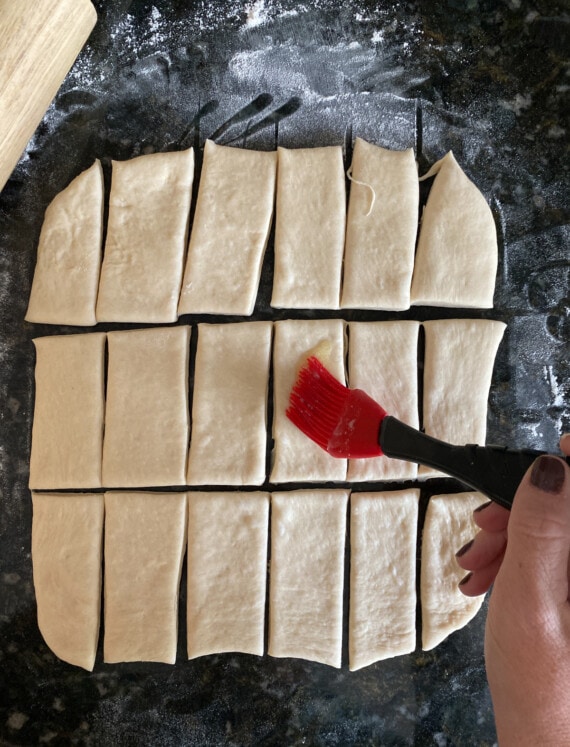
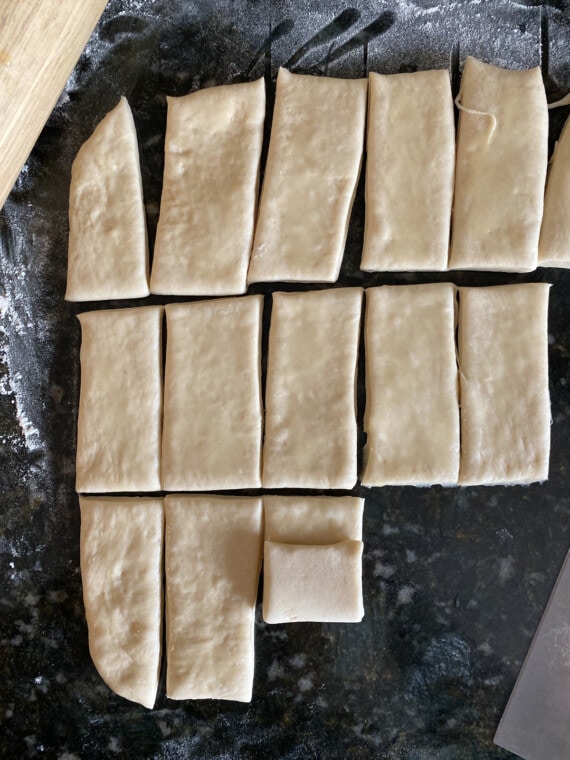
- Fold. Brush each dough rectangle with melted butter, then fold the rectangle over so that it’s not quite folded in half (see photo).
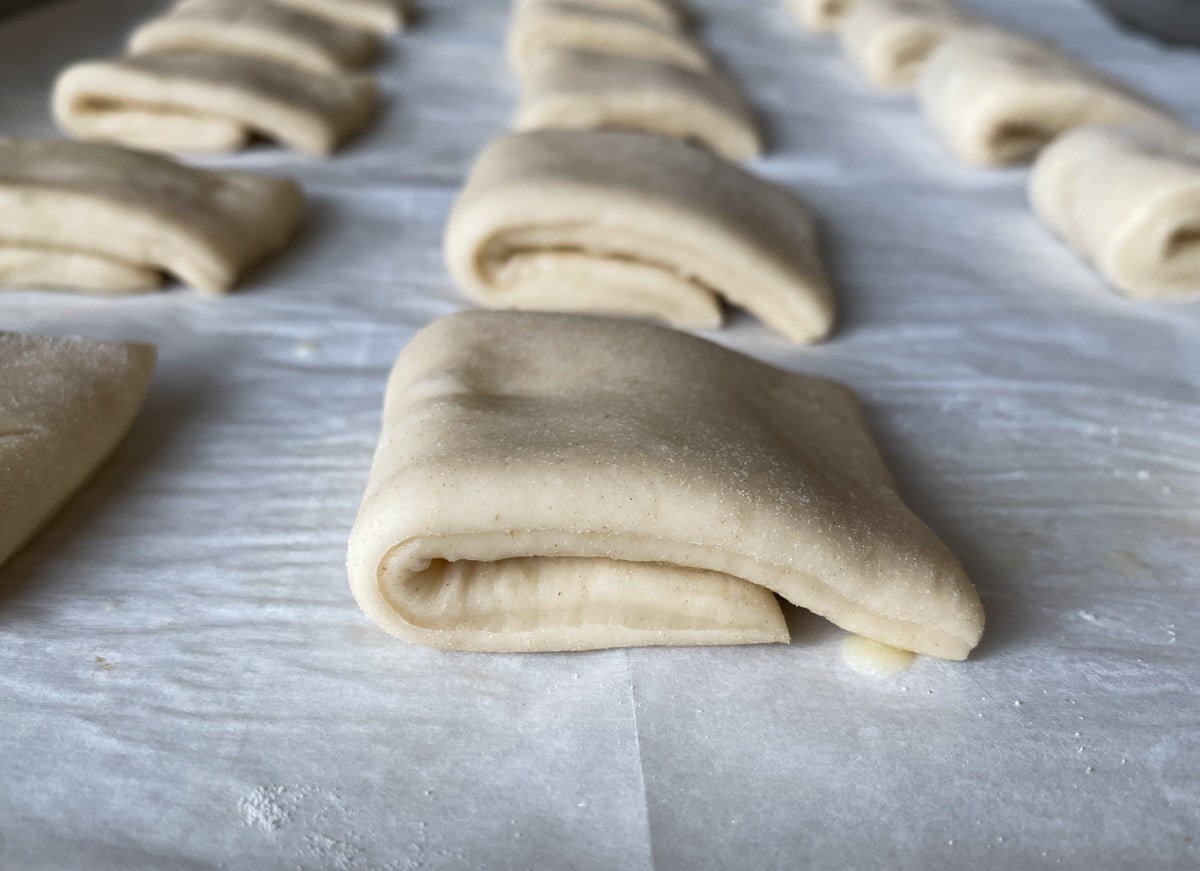
- Rise. Nestle the rolls onto a lined baking sheet. Cover the rolls and place them somewhere warm to rise for 30 minutes.
- Bake. When the rolls have doubled in size, bake them in a 375ºF oven for 12-15 minutes until they’re nice and golden. Brush the rolls with more butter, and serve them while they’re still warm.
Why Are My Rolls Dense?
There are a couple of reasons why your dinner rolls turned out tough and dense. The first is that there’s too much flour (see the tips section below). Another reason could be that the dough didn’t have enough time to proof before baking. Remember to rest the dough for 10 minutes after kneading, as this allows the gluten to relax. Also, give the rolls at least 30 minutes to rise and get puffy before they go into the oven.
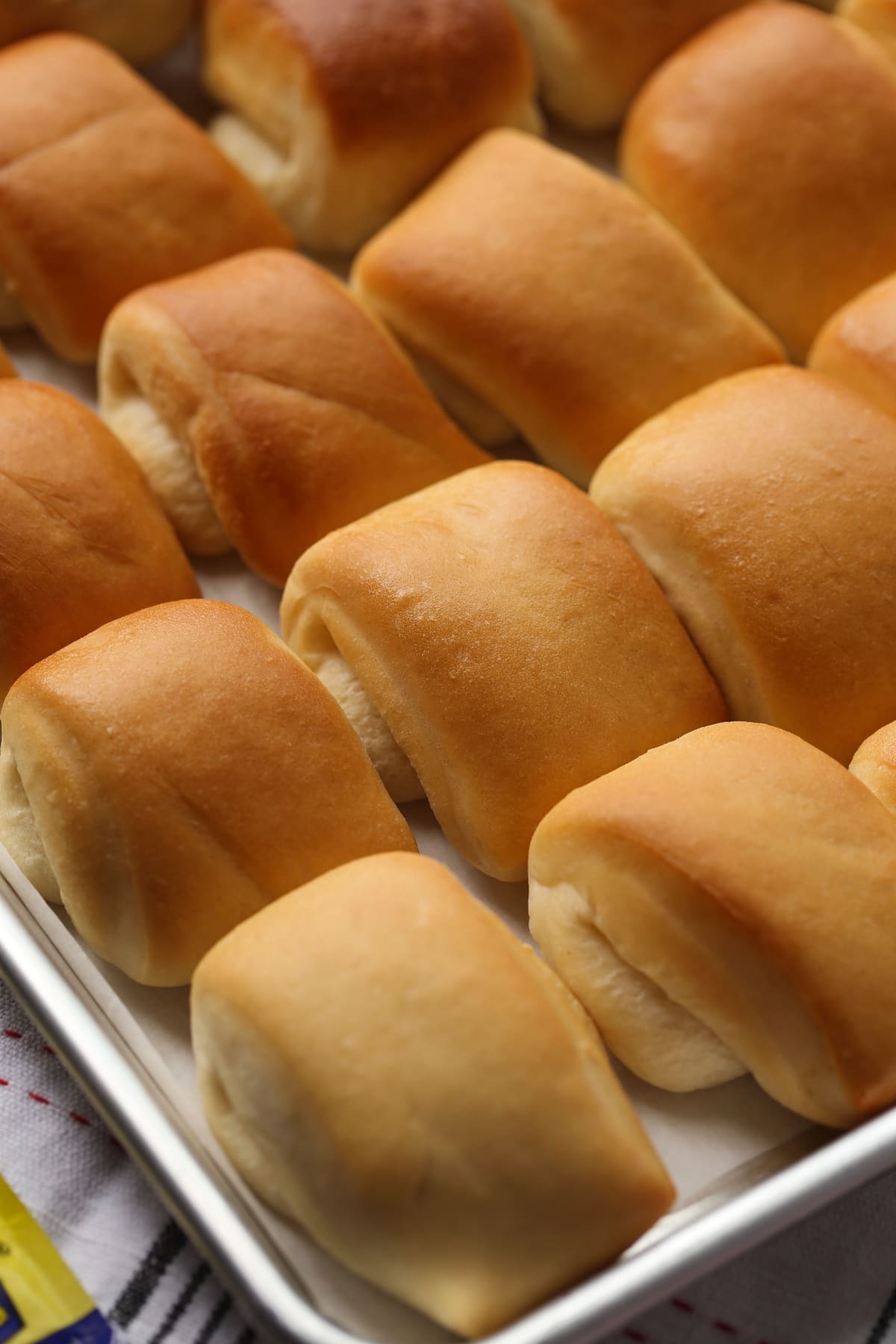
Tips for Success
Whether you’re experienced in baking with yeast or just starting, there are a few key things that make all the difference when making light, puffy bread rolls from scratch. Keep the following in mind:
- Make sure that your yeast isn’t expired. Check the dates on the sachet and discard any yeast that’s past its best-before date. Expired yeast won’t make you sick, but it won’t do your bread rolls any favors.
- Measure the flour correctly. Especially in bread baking, correctly measuring flour is key. It’s worth investing in a kitchen scale, but if you don’t have one, use the spoon-and-sweep method. Spoon the flour from the bag into your measuring cup, and use the back of a knife to level it off. Avoid scooping the flour directly from the bag.
- Proof the dough somewhere warm. If you’re struggling to find a warm spot for your rolls to rise, heat your oven to 200ºF, and then switch it off when it comes to temperature. Finish preparing your rolls and place them, covered, into the warmed oven to rise. Some newer ovens even come with a “Proof” setting. If you have this feature, use it!
- Give the dough time to rise. If the location where your dough is proofing is on the cooler side, it might take longer than 30 minutes for the dough to double in size. That’s OK, just be patient.
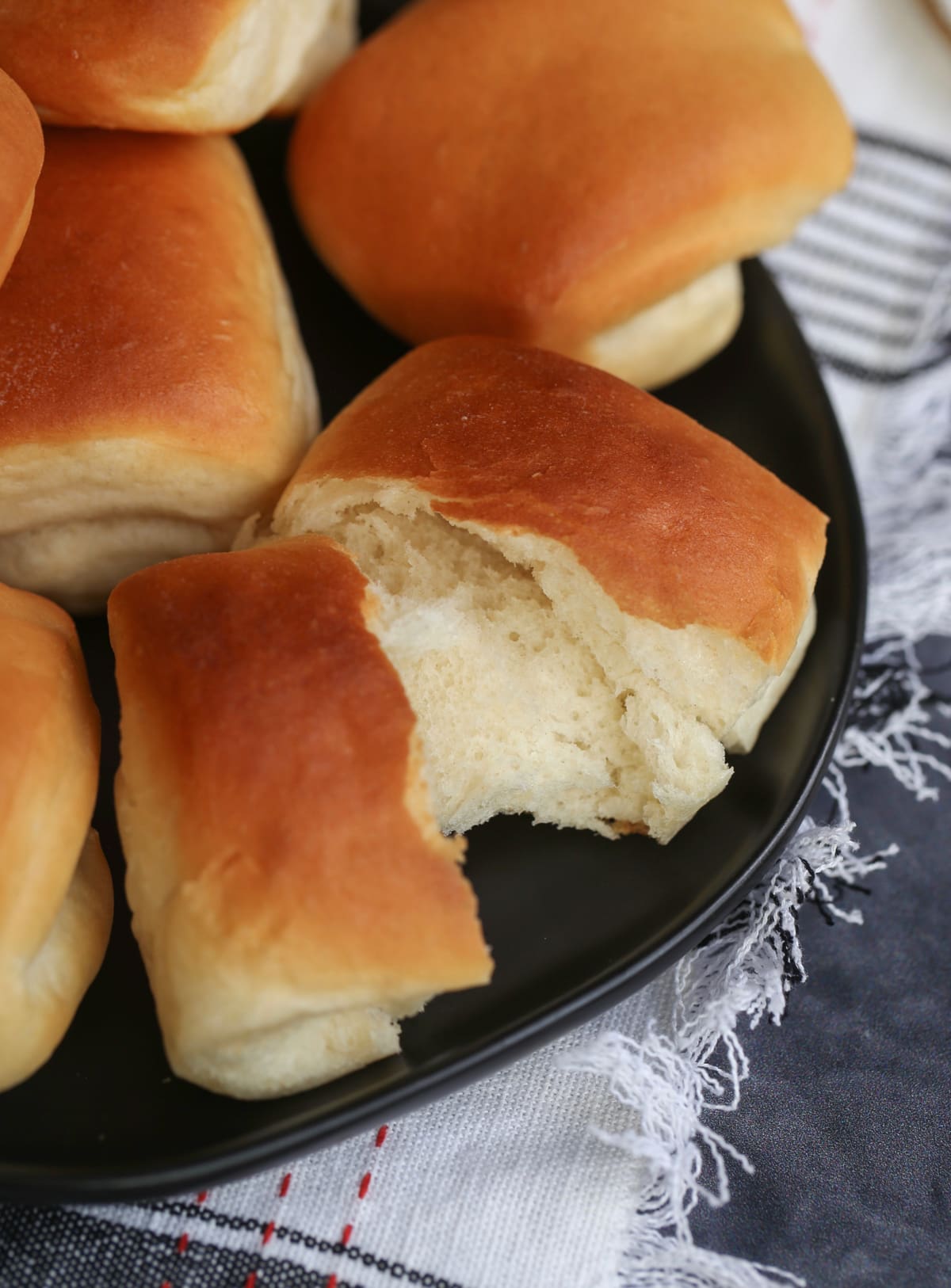
Serving Suggestions
There’s rarely an occasion at our table that doesn’t warrant a basket of fresh, fluffy dinner rolls. We love Parker House rolls smothered with butter and served next to a big pot of homemade chili on game day, or alongside Instant Pot cubed beef and asparagus for a cozy Sunday dinner. There’s nothing like a soft roll to sop up a plateful of leftover gravy!
Any time of the year, Parker House rolls pair great with a bowl of soup or hearty Brunswick stew. They’re also a favorite side dish at Thanksgiving next to mashed potatoes and cornbread dressing.

How to Store Homemade Parker Rolls
- To Store. Keep your baked rolls in an airtight container or Ziploc bag at room temperature for up to 3 days. Make sure that the rolls are completely cooled before storing them to avoid condensation, which makes them soggy.
- Freeze. Freezing Parker House rolls is a great way to preserve their freshness if you know you’ll have leftovers. Once the rolls are cooled, double-wrap them in plastic wrap or store them in an airtight container to keep them frozen for up to 2 months. Defrost the rolls at room temperature.
More Holiday Sides To Try
Print
Parker House Rolls
- Prep Time: 35 minutes
- Rising Time: 30 minutes
- Cook Time: 15 minutes
- Total Time: 1 hour 20 minutes
- Yield: 36 rolls
- Category: Bread
- Method: Oven
- Cuisine: Dinner
Description
These soft Parker House rolls are a classic dinner rolls recipe! Fluffy, buttery, and light, homemade rolls are the perfect side dish for any meal.
Ingredients
- 4 3/4 to 5 1/4 cups all-purpose flour
- 1/3 cup granulated sugar
- 2 envelopes Fleischmann’s® RapidRise® Yeast
- 1 1/2 teaspoons kosher salt
- 3/4 cup milk
- 3/4 cup water
- 1/2 cup butter, divided
- 1 egg
- Optional – 2 tablespoons melted butter to brush on baked rolls
Instructions
- In the bowl of your stand mixer fitted with the paddle attachment combine 2 cups flour, sugar, undissolved yeast and salt. Mix on low until combined.
- In a microwave-safe bowl heat the milk, water, and 1/4 cup butter in 30 seconds increments until very warm to the touch (120°F to 130°F). Butter might not be melted all the way, which is ok.
- Pour the milk mixture into the flour mixture. Mix on medium speed for 2 minutes, scraping the sides of the bowl as necessary.
- Add in the egg and 1/2 cup flour and mix for 2 minutes at high speed. Stir in enough remaining flour to make a soft dough. Dough should form a ball and be slightly sticky. Knead on a lightly floured surface until smooth and elastic, about 8 to 10 minutes, or alternately, you can do this step in your mixer with a dough hook.
- Cover the dough with a clean towel and let it rest for 10 minutes.
- Line a large baking sheet with parchment paper. Set aside.
- Divide the dough in half. On a lightly floured surface, roll each half to a 12-inch square, about 1/4-inch thick. Using a knife or a pizza cutter cut the dough into 6 (12 x 2- inch) strips. Then cut each strip into thirds (4 x 2-inch rectangles).
- Melt the remaining 1/4 cup butter. Brush each rectangle with butter.
- Crease each rectangle slightly off center with dull edge of knife and fold at crease, so it’s not quite folded in half.
- Place the rolls onto the prepared baking sheet, short folded side facing down. Cover and place in a warm, draft-free place. Allow to rise for 30 minutes, or until doubled in size.
- Preheat oven to 375°F.
- Bake for 12-15 minutes, or until golden brown.
- Brush with more melted butter, if desired. Serve warm.
Notes
Recipe adapted from breadworld.com
Store airtight at room temperature for up to 3 days
Nutrition
- Serving Size: 1 roll
- Calories: 103
- Sugar: 2.2 g
- Sodium: 102.1 mg
- Fat: 3.5 g
- Carbohydrates: 15.5 g
- Protein: 2.3 g
- Cholesterol: 13.7 mg


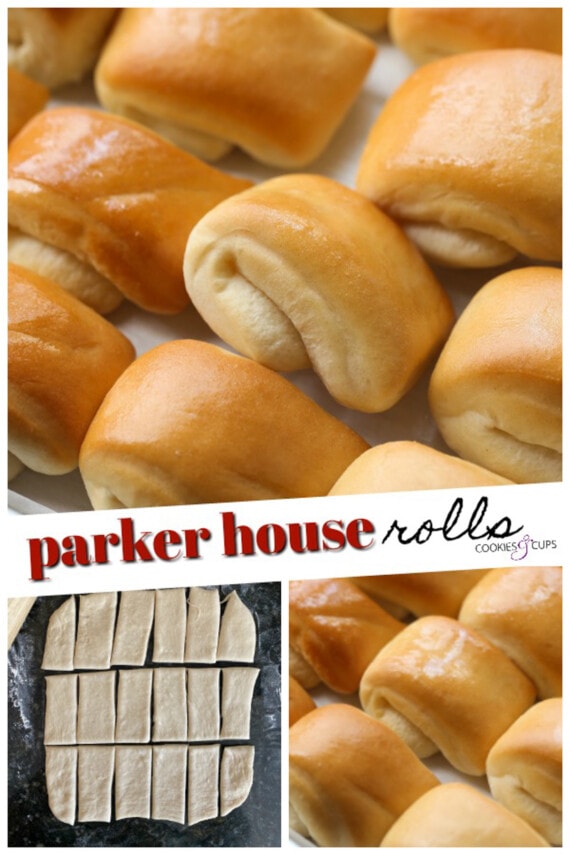
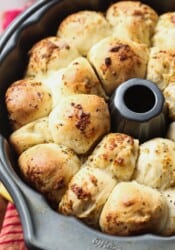

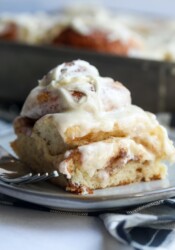








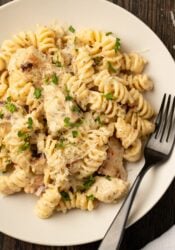

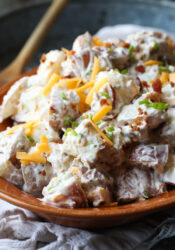


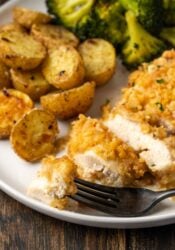
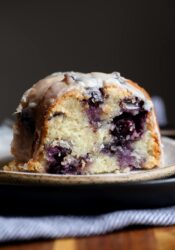
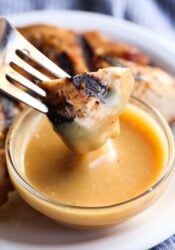
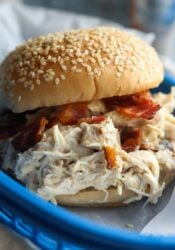
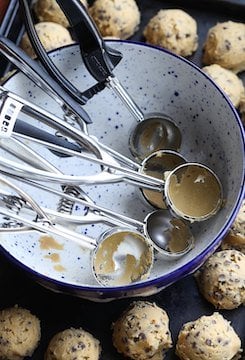
This recipe was so easy and the rolls were delicious! I needed rolls in under an hour and this delivered! Thanks so much!!
So glad you liked them!!
what would be the best way to freeze these?
you can freeze the dough before you bake it in an airtight container for up to a month, or if you would like to freeze them baked place them on a baking sheet, flash freeze them and them place them into a zip top bag and store int he freezer 🙂
Thank you for including hand kneading directions, not everyone had a mixer with a dough hook!
Hi Shelly, Just wondering if these can be partially made and frozen. They sure do look yummy, and I’m afraid if I try them before Thanksgiving, I’ll eat the whole batch myself!!! LOL
Yes you absolutely can!